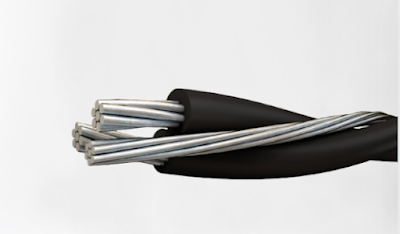What is Hipot Testing of Cable?
Introduction
In the realm of electrical engineering, particularly in the domain of high voltage systems, ensuring safety and reliability is paramount. One crucial aspect of this assurance is the rigorous testing of cables. Among the various testing methods, Hipot Testing stands out as a cornerstone in evaluating the insulation integrity of cables. In this comprehensive guide, we delve into the intricacies of Hipot Testing, its significance, procedures, and its role in maintaining the robustness of high voltage cables, including 22kV and 33kV cables.What is Hipot Testing?
Hipot, short for High Potential, is a type of electrical safety test conducted on cables and other electrical components to determine their insulation quality and ability to withstand high voltage. The primary objective of Hipot Testing is to identify potential weaknesses or defects in the insulation that could lead to electrical breakdowns, faults, or safety hazards.Significance of Hipot Testing
In high voltage systems, such as those operating at 22kV and 33kV, the insulation integrity of cables is critical for safe and reliable operation. Any breakdown in insulation can result in catastrophic consequences, including power outages, equipment damage, and even endangering lives. Hipot Testing serves as a preventive measure to detect insulation flaws before they escalate into serious issues, thereby ensuring the longevity and reliability of the entire electrical infrastructure.Understanding Insulation Breakdown
Insulation breakdown occurs when the dielectric strength of the insulation material is surpassed, leading to the flow of current through the insulation. This phenomenon can be triggered by various factors, including voltage spikes, environmental conditions, manufacturing defects, or aging of the insulation material. Hipot Testing helps to pinpoint weak spots in the insulation by subjecting the cable to higher voltages than its rated voltage, simulating extreme operating conditions.Types of Hipot Tests
There are two primary types of Hipot Tests:
AC Hipot Test: In this test, the cable is subjected to a high voltage AC (Alternating Current) signal, typically at levels significantly higher than its rated voltage, for a specified duration. The test equipment measures the leakage current flowing through the insulation. Excessive leakage current indicates potential insulation breakdown.DC Hipot Test: Similar to the AC test, the DC Hipot Test applies a high voltage DC (Direct Current) signal to the cable under test. This test is particularly effective in detecting insulation weaknesses that may not be evident during AC testing.
Procedure for Hipot Testing
The Hipot Testing procedure involves several steps to ensure accurate and reliable results:- Preparation: Prior to testing, ensure that the cable is properly installed and grounded. Disconnect any sensitive equipment connected to the cable to prevent damage during the test.
- Setup: Connect the cable to the Hipot Test equipment, ensuring proper insulation of the test setup to prevent electrical hazards. Set the test voltage and duration according to the specifications and standards applicable to the cable being tested.
- Testing: Apply the high voltage signal to the cable and monitor the leakage current. Observe any abnormalities such as excessive leakage current, arcing, or insulation breakdown. Record the test results for analysis.
- Evaluation: Analyze the test results to determine the insulation integrity of the cable. Compare the measured leakage current with the permissible limits specified by industry standards or regulatory requirements.
- Documentation: Document the test procedure, results, and any observations made during the testing process. Maintain records for future reference and compliance purposes.
Importance of Hipot Testing in High Voltage Cables
High voltage cables, such as those rated at 22kV and 33kV, play a crucial role in transmitting and distributing electrical power over long distances. Any faults or failures in these cables can lead to disruptions in power supply, posing significant challenges to industries, utilities, and consumers alike. Hipot Testing ensures that these cables meet stringent quality and safety standards, thereby minimizing the risk of failures and enhancing the reliability of the electrical infrastructure.
Key Benefits of Hipot Testing
- Early Detection of Insulation Defects: Hipot Testing can identify potential insulation weaknesses before they manifest as catastrophic failures, allowing timely corrective actions to be taken.
- Enhanced Safety: By identifying and rectifying insulation flaws, Hipot Testing helps mitigate the risk of electrical hazards such as short circuits, fires, and electric shocks.
- Compliance with Standards: Many regulatory authorities and industry standards mandate Hipot Testing for high voltage cables to ensure compliance with safety and performance requirements.
- Reliability Assurance: Regular Hipot Testing of cables provides assurance of their reliability and longevity, minimizing the likelihood of unplanned downtime and associated costs.
- Quality Assurance in Manufacturing: Hipot Testing is often performed during the manufacturing process of cables to verify their quality and adherence to specifications.



Comments
Post a Comment